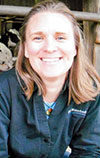“I had the tool belt; I just stopped using them,” Cunningham said in an interview for The One Thing’s podcast with Geoff Woods, “The Habit that cost $100M to learn and why it was worth it.”
“Money, finance, business do not respond well to emotions,” Cunningham continued.
Cunningham views life like a university.
“At university, just like life, there are courses. Every single course has a tuition. I took a course in the university of life, and the tuition was 100 million dollars,” he said. “Not very many people get to take this course.”
So what was the $100 million mistake Cunningham made? It was not dedicating time for the sole purpose of thinking through a business decision.
“All my problems started out as good ideas,” Cunningham said. “Most people, including me, have never set aside time to do the heavy lifting of thinking.”
Do you have dedicated, uninterrupted thinking time as part of your day, week, month, quarter or year? What questions do you ask yourself during that time? Could you benefit from carving out thinking time for setting your priorities for your business, your family or your marriage?
During his thinking time, Cunningham checks his assumptions and finds the unasked questions.
He has found that many people will “run the wrong direction enthusiastically.” One way he makes sure he’s pointed in the right direction is to prioritize thinking time. During this uninterrupted quiet time, he taps into core disciplines for decision-making, like evaluating risk. Before he makes a decision or investment, Cunningham asks himself these three questions and allows time to really ponder the answers:
- What’s the upside?
- What could go wrong/what’s the downside?
- Can I live with the downside?
Do you have a decision on the farm to which you could apply these three questions? Do you have other questions that you use to assess risk in the decisions you make?
“Most of us have imagined that the key to being successful is getting busy,” Cunningham said, “but in reality, the key to being successful is to figure out the priorities, plan my day before it starts, manage my calendar so I’m allocating time to the appropriate things that will actually move the needle – and all of that is set in motion by thinking.”
Cunningham believes one of the biggest sabotages to success is when we find an answer, we stop looking for other questions and different possibilities. Finding an answer cuts off further thinking about possible alternatives.
Cunningham pointed out that a great business answer today could be a horrible answer tomorrow. And vice versa, a horrible answer five years ago could be a terrific answer today. The environment keeps changing.
“Smart people have really good answers. Geniuses have really good questions,” Cunningham said.
Set aside time to actually think about the business. If you have multiple businesses, set aside time to think about each of them – individually and as an investment portfolio.
Ask yourself: If your farm could talk, what would it say? If your business could talk, what would it say?
Three tips for thinking time:
- Dedicate 30 minutes, sitting down, with the phone turned off and no computer.
- Keep staring down that question: If your farm/business could talk, what would it say?
- Write down all the things your business would say.
Nothing can change until the unsaid is spoken.
“The higher you go, or want to go, the greater the requirement to have someone around you to tell you the truth. We are too good at creating justifications, stories about why it looks the way it looks,” Cunningham said. “It’s why we need people around us to tell us the truth.”
Start by looking within, and then assemble the right people around you who will tell you the truth.
If your farm could talk, what would it say, and are you willing to listen? ![]()

-
Amy Throndsen
- Chief Operating Officer
- Advanced Comfort Technology Inc.
- Email Amy Throndsen




